The world is chock-full of great walking experiences, whether you prefer mountain rambles, jungle treks, desert expeditions or a mix of all these, there are numerous multi-day walks that have you covered. When we sat down to pick five favourites, it was with a mix of the above terrain types, cultural experiences, and levels of challenge that were forefront in our minds. We also decided to go global, even though we are, still, in the midst of a crippling pandemic. But, if there’s something that can lift spirits in dour times, it is dreaming of better times – and experiences ahead. These five great walks definitely guarantee that, so read on, be inspired, and start planning.
The Overland Track, Tasmania
We could be accused of taking the easy way out by choosing Tassie’s famous Overland Track as one of our top eight treks. After all, the Apple Isle is jam-packed with awesome multiday walking options – all of which could easily be included in this list. So what separates the Overland from its neighbours? There are tougher challenges (think: Western Arthurs Traverse; South Coast Track) and there are more remote ones (Mt Anne Circuit, anyone?) but simply put, it is the variety of ways you can travel the Overland that see it make this list. Whether you opt for the popular summer season, less-crowded shoulder season, winter (yes, bring your snow shoes), guided, independent, camping in tents or enjoying the hut-to-hut experience, the Overland can cater for any walker’s preferences, and deliver a grand adventure in this still-wild island state.
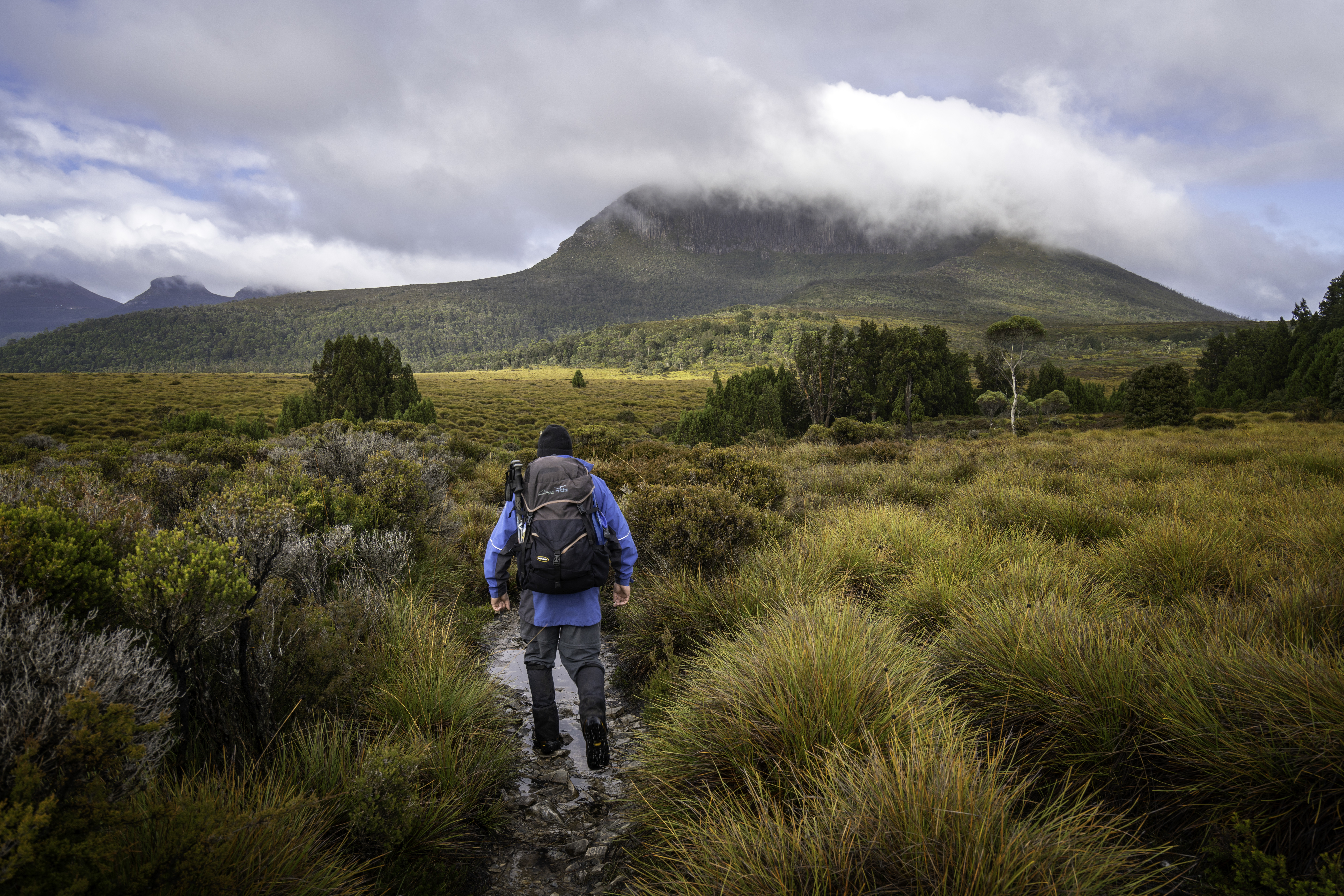
The 65km one-way Overland is rated as a moderate walk, and starts at beautiful Cradle Mountain and traverses the sub-alpine landscape of the Tassie high country, taking in glacier-wrought valleys, rainforests, buttongrass-clad moorlands and lunar-esque high meadows. If you are averse to crowds, we recommend either going in the shoulder season (autumn or spring) or, if you’re keen and want a truly unique Overland trek, go in winter. Summer means lots of people (although numbers are now controlled thanks to a permit system) crammed into campsites and huts, whereas the quieter times of year allow for a more relaxed, contemplative time in this World Heritage-listed region. The huts on the Overland are reminiscent of those on the NZ Great Walks across the ditch, so are great for shelter from the oft-volatile Tasmanian weather. The Overland is hugely popular, so you will need to book campsites/huts well ahead if you’re walking independently. Guided treks are offered by World Expeditions and are a brilliant way to take the stress/hassle out of planning a trek such as this (see Fact File at the end of this story for more info).
You will need to bring all your gear – and clothing for all seasons, regardless of the season. Yes, the weather can be that crazy and if you’re stuck out on the track with a few hours to go until the next hut, and the temperature has dropped to single digits, you’ll be glad you packed that down jacket – even if it is February.
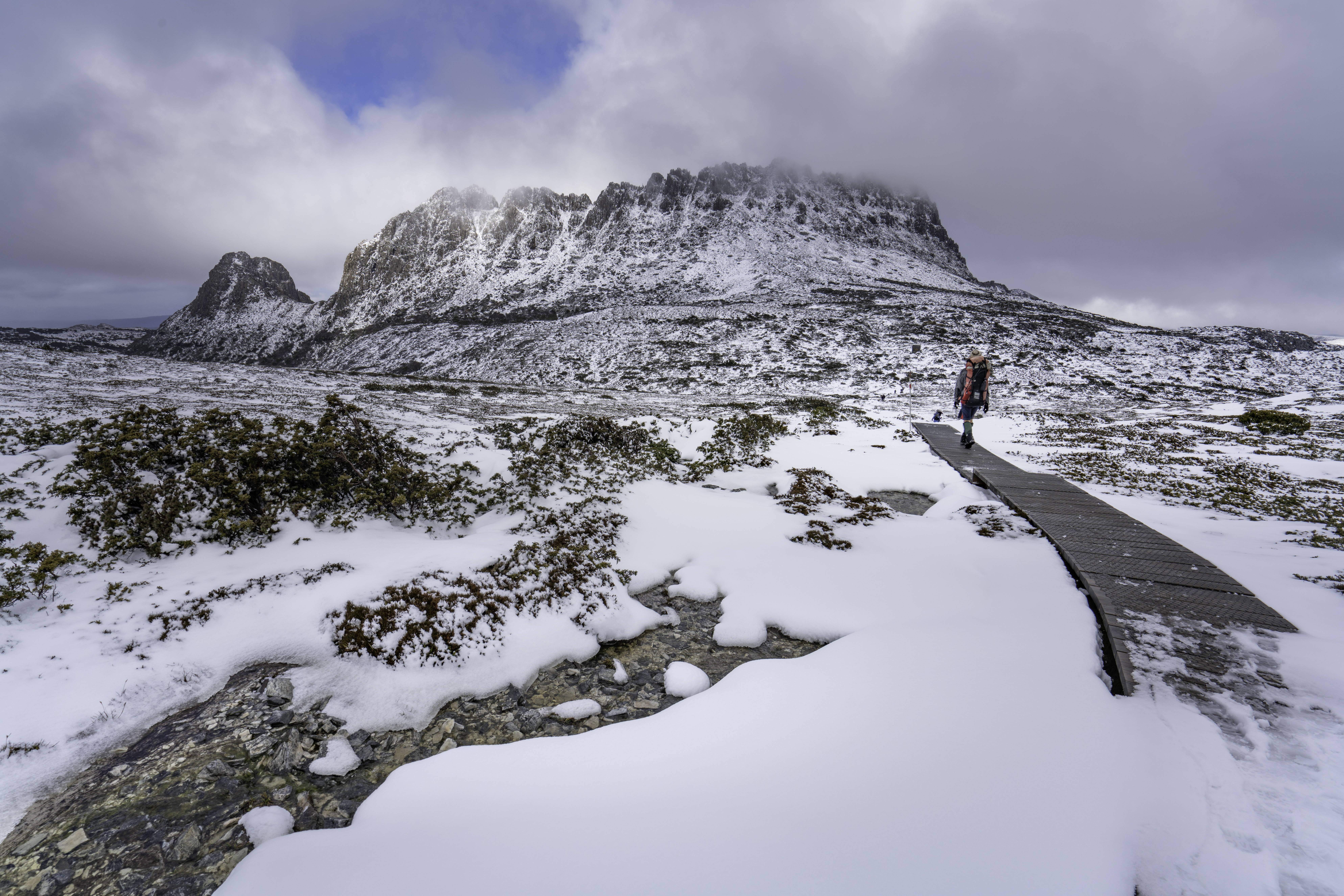
As well as the main track, there are plenty of sidetracks to explore, often leading to some amazing viewpoints, so if you have extra days on hand, make sure you factor these extra excursions into your planning (and your hut bookings). Some of the many highlights along the track are the side-trips to the top of Mt Ossa and Cradle Mountain itself. We can joke about spotting the Tassie Tiger during your hike, but you can see a lot of wildlife on this walk; wombats, snakes and a ton of birdlife will – sort of – make up for the undoubted no-show of the Apple Isle’s most famous former resident. Add to this the comfortable mix of easy through to slightly challenging walking, and you’ll be delaying your return to “the mainland” from this wild region for as long as you can.
The West Coast Trail, British Columbia
Studying the West Coast Trail (WCT) on a map, you might think it is a straightforward, seven-day hike following the western coastline of British Columbia’s Vancouver Island, but this would be a serious mistake – not because the trail is tough, but because it offers everything you could wish for in seven days in the wild. The WCT experience includes whales and orca splashing about in the Pacific Ocean; cougar, black bear and wolf roaming the dense forest; and an undulating path over a multitude of tree roots, plenty of mud (especially after rain), some old (and some new) timber boarding, more than 100 bridges and 70-plus ladders that provide access to the mainly beach-based campsites. If there’s another weeklong walk that packs in as much excitement and adventure, we’d be very surprised.

Hikers can tackle the WCT either north to south or south to north. We’d opt for the tougher south to north version, as the southern section of the WCT includes more rugged track sections, water/creek crossings and steeper terrain – and you will be carrying a heavier pack – but it’s worth the effort as you’ll experience some of the best beach campsites you can imagine, each with clean toilets and bear boxes, where all food is stored to lessen the attraction of the bruin kind.
This walk is one that always appears on “best of” lists and, as a result, booking a place on it means planning well ahead – especially if you’re keen to tackle it as an independent hiker via a WCT Overnight Use Permit, rather than as part of a guided group. Aussies who are keen to experience this iconic walk as a guided trip can book with World Expeditions (see Fact File for more info).
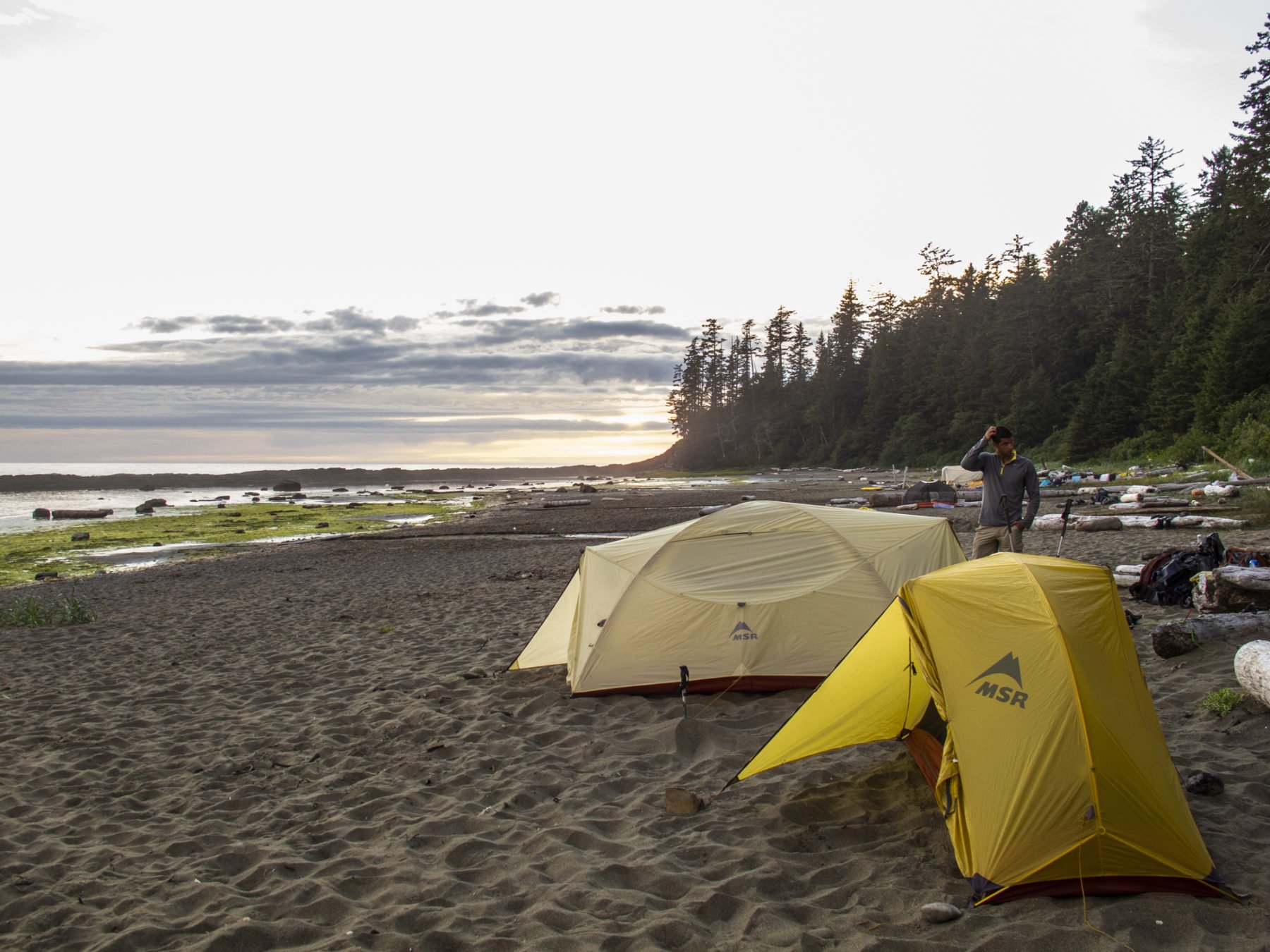
Whatever your poison in regards to the WCT, you will need to be fit: at a minimum your pack (whether guided or independent; you have to lug not only your own clothing, tent and sleeping gear, but also food for the seven days) will weigh at least 20kg, and you will have to be capable of negotiating tricky, occasionally technical ground, as well as crossing those few waterways that aren’t bridged (or have a cable car) and getting used to climbing ladders. It sounds challenging but if you’re fit and have walked multi-day routes before, the WCT will, over the course of its seven days, ingrain itself permanently in your memory as an epic adventure.
Mt Kenya, Kenya
Mt Kenya is the African continent’s second highest mountain (Kilimanjaro is numero uno) and, put simply, it is a cracking multiday trekking adventure. There is a mix of route options to the top of the trekking summit of Point Lenana, along which you will encounter some seriously dramatic landscape and plenty of wildlife. Plus, there are far fewer trekkers here compared to Kili…
Mt Kenya is best tackled in a guided group (such as World Expeditions) as this takes away all the hassles of logistics and permits. The adventure starts well before the walk; you will be transported via 4WD along a rough, slippery, bumpy track for a few hours before you start the track and walk to the cottages near the Chogoria gate entrance to Mt Kenya National Park. When this writer trekked here with World Expeditions along the Chogoria/Sirimon route, we travelled in some old but still capable Series III Land Rovers. At this very early stage, you are already 3017m above sea level, so the rest of the afternoon is spent relaxing in the cottages and getting ready for your next day of walking.

The first day is through forest before moving higher and into an alpine moorland region. Keep an eye out for wildlife ranging from elephant and buffalo to antelope and monkeys along the way to camp at Lake Ellis. This is a beautiful first camp but is trumped by the brilliant campsite at Lake Michaelson on the second night of the trek. After climbing up to 4000m, you suddenly drop down 200m into the famous Gorges Valley, a part of which encompasses the campsite itself.
The landscape changes again the following day as you trek even higher; moorland grasses drop away as you enter the high alpine zone and are replaced by rock and scree, with the jagged spires of the nearby peaks adding to the lunar-esque terrain. From high camp at Simba Tarn (at a lofty 4560m) the final push – via an early 3.30am start – will take you to the summit of Point Lenana (at 4985m), with the most amazing 360-degree views of the African plains below and, amazingly, the dome-shaped silhouette of Mt Kilimanjaro, roughly 260km in the distance. Mt Kenya is made up of three separate peaks, with Lenana the highest trekking summit. For those with climbing skills (and more time) the pyramid-shaped Batian is the true high peak of Mt Kenya, and a serious alpine/rock climbing goal.
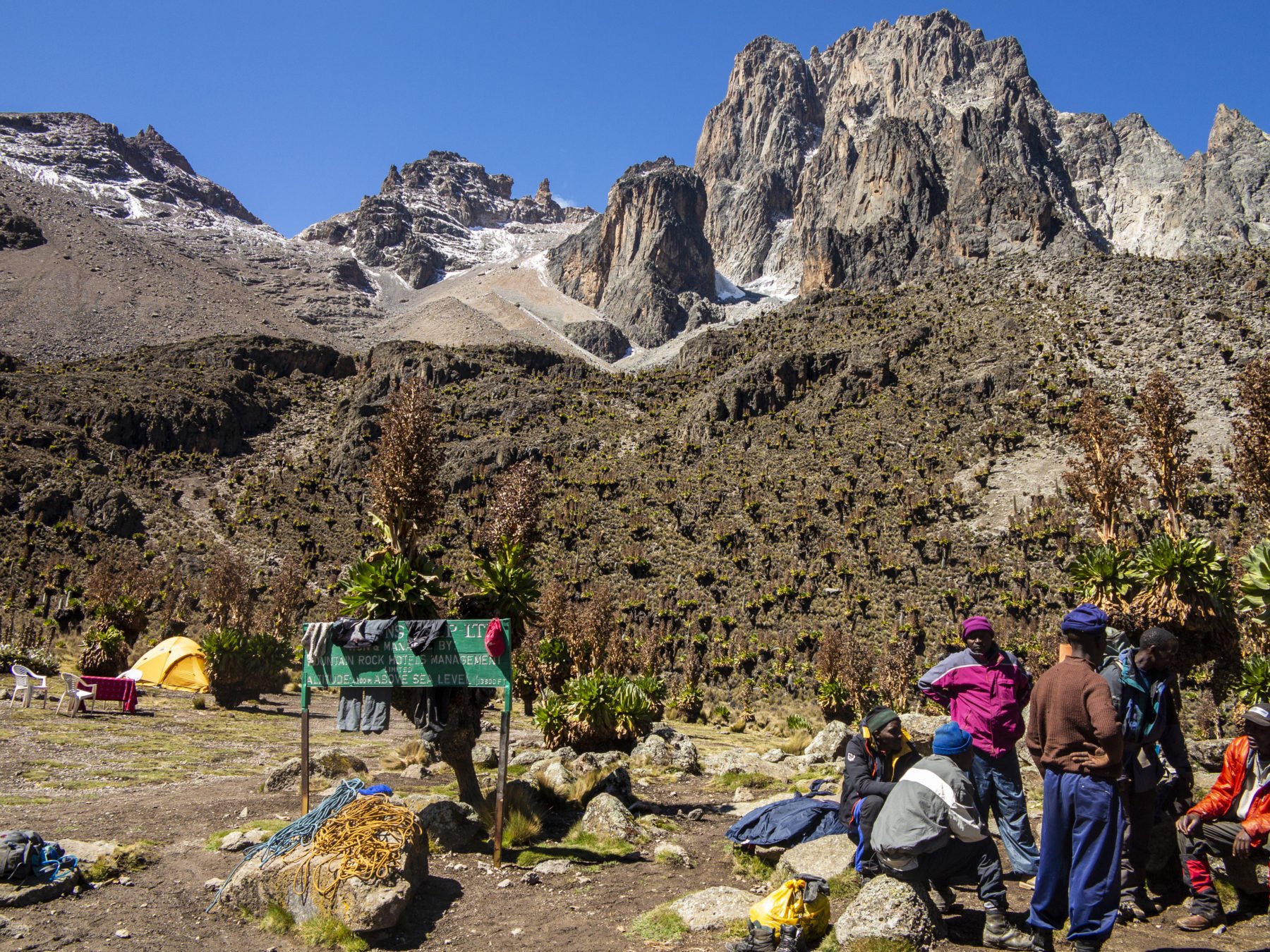
The return from the summit is long but downhill; you will pass Shipton’s Camp, with its buildings and other trek groups camped around them, on the way down to Moses Camp for a well-earned rest before the last descent down the Sirimon Valley to the national park gate. For a five-day trek, Mt Kenya packs in everything you could wish for: wildlife, amazing scenery, great guides and porters, and what this writer rates as one of the world’s most amazing sunrises.
The Dusky Track, New Zealand
New Zealand is chock-full of any number of multiday treks that would sit comfortably on a walker’s bucket list – it just boils down to how much of a (rewarding) challenge you want. Enter the Dusky Track. Deep, deep down in the wild southern section of Fiordland National Park, the Dusky is one of Australasia’s most challenging walks – and is for experienced, independent walkers only; there’s no cushy guided option here, folks, it is an epic undertaking. It is also one that pays massive dividends: you will be transported to one of the world’s most remote regions – most likely by float plane or boat – to tackle the journey from Lake Hauroko in the south, to the track’s northern finish point of Lake Manapouri. You will traverse some absolutely crazy terrain, ranging from low boggy floodplains to high ridges and mountains, while negotiating 21 three-wire bridges across creeks and rivers, and – most likely – slogging for at least one day through deep, boot-destroying mud along a rough, barely formed track. In other words, it is a real adventure!

The Dusky Track will, at a minimum, take you eight days. But make sure you pencil in another two days at least to allow for any weather delays; high rainfall means flooded track sections, which in turn means extended stopovers at huts. Then, add another two for the not-to-be-missed optional side trip to Supper Cove, on Dusky Sound. Yep, that’s 12 days. And you’ll need to be fit and strong as you will have to carry all your food, clothing, sleeping and cooking gear in your pack – there are no food drops here. Like we said, it’s an epic undertaking.
The huts are relatively basic but offer the required shelter and are a welcome sight after a day on the track. The days are long, but time is forgotten here as you focus on negotiating the terrain, checking out the incredible views and, most importantly, soaking up the entire enriching experience. Not all who venture south to attempt the Dusky tackle the side trip to Supper Cove but, the way we see it, if you’re going to be heading to a place that is so remote, and you’ve seen some of the brilliant photographs of the cove itself, you will put your head down and just do it.

For all this ruggedness and long distance, the Dusky has earned its place on this list for one simple reason: there’s nothing else quite like it in our part of the world. And if you ask anyone who has done it what their opinion is, you will probably be surprised at both their passionate recollection of their experience, and also their comment of, “It was tough and challenging, but I’d do it again tomorrow if I could”. It’s amazing how venturing into a true wilderness can affect people…
John Muir Trail, USA
Connecting Yosemite National Park’s Happy Isles with the summit of Mt Whitney, via Seqouia National Park, the 340km John Muir Trail (JMT) takes you up high, and then higher again (around the 2400m mark), as you traverse the rugged Sierra Nevada Range. Alpine lakes, jagged mountaintops, steep alpine passes and designated wilderness areas – as well as oodles of wildlife – all combine to make this long-haul journey a cracker.
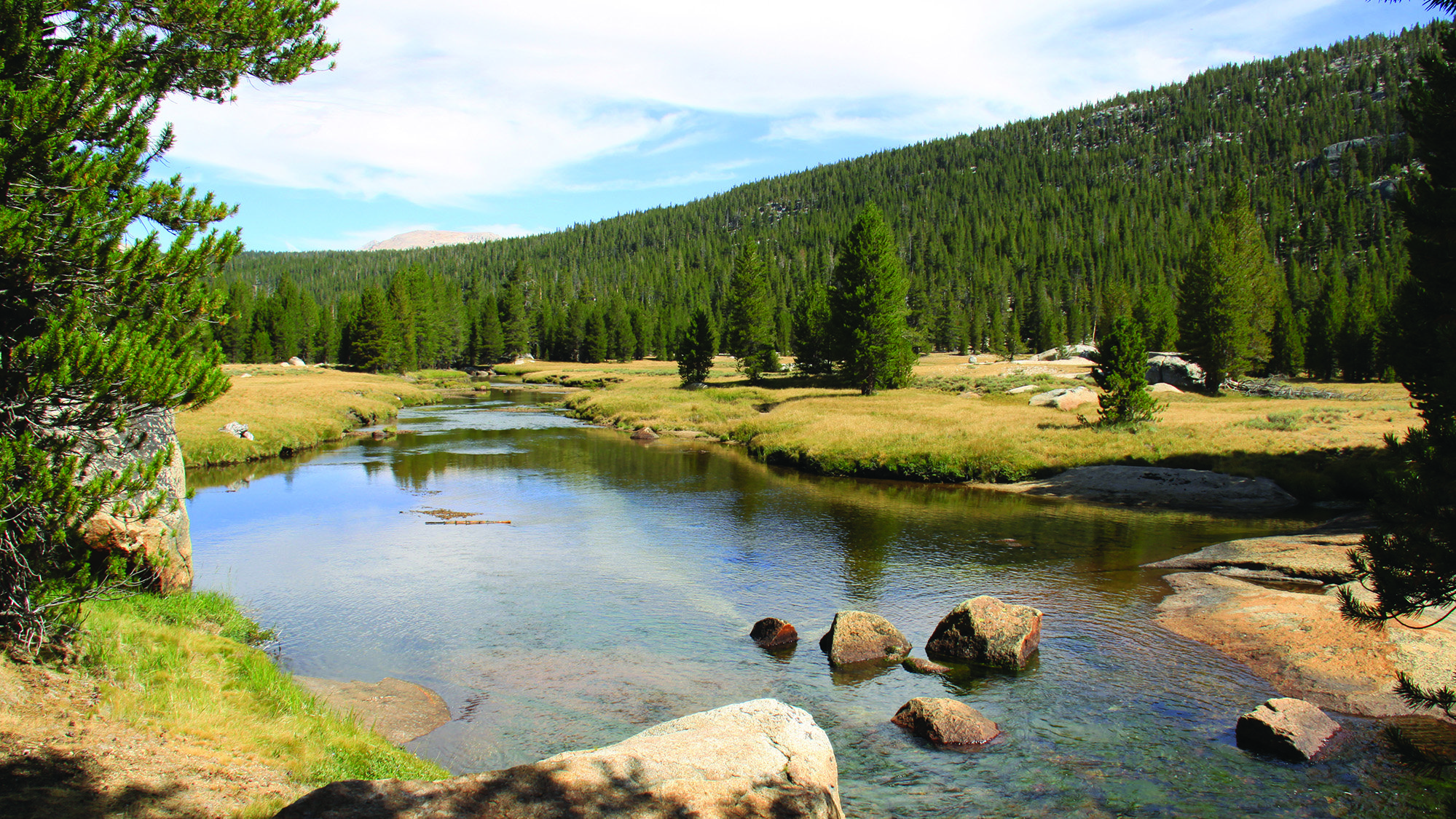
Like most treks in this list, you can walk the JMT in both directions – north-south or the other way. Due to the rugged (and, in winter, snow-covered) alpine terrain the best time of year is the northern hemisphere summer (July-September). If you decide to walk the JMT north-south, you get to finish on a figurative highpoint: hiking to the summit of Mt Whitney which is, at 4418m, the tallest peak in the USA’s lower 48 states. As well, by kicking off in Yosemite NP, you’re near instantly surrounded by world-famous landmarks, including Nevada Falls, Half Dome and Cathedral Peak, with the latter two bucket-list destinations for rock climbers around the world.
Leave Yosemite NP and you’re soon in the spectacular Ansel Adams Wilderness, named in honour of the famous landscape photographer, with its steep, rugged terrain. Then, once you cross over Donohue Pass, you’ll enjoy commanding views of the epic Sierra Nevada Range. The Ansel Adams Wilderness section is incredible and leads on to even more spectacular vistas in Kings Canyon NP before coming to the last portion of the JMT that starts in Sequoia NP, and encompasses the haul to the Mt Whitney summit.

As with any global bucket-list trek – and especially as it resides in such a populous country – you will have to plan well ahead for your JMT adventure. Aim to book your permit at least six months in advance and make sure you don’t forget to organise food drops – unlike the Larapinta Trail, the JMT is well away from civilisation, roads and access points. Of course, the sheer size of the JMT means that, even though it is popular and might seem like it should be busy, it won’t be. It’s a huge slab of one of the world’s wild regions, so there’s plenty of space for anyone keen to take a few weeks or more to explore it.
Fact File
Overland Track
Guided: World Expeditions runs excellent guided treks on the Overland Track.
West Coast Trail
North America Active offers an eight-day guided experience on the WCT.
Mt Kenya
World Expeditions offers a guided experience along the Chogoria/Sirimon route included in this story.
The John Muir Trail
North America Active offers a number of guided options of various lengths along this famous walk.
Dusky Track
This is one of NZ’s more challenging walks and is not currently offered as a guided walk. However, for the experienced walker, it is a brilliant challenge. See the New Zealand Department of Conservation (DOC) for info on booking DOC huts and campsites, plus links to track transport operators.
